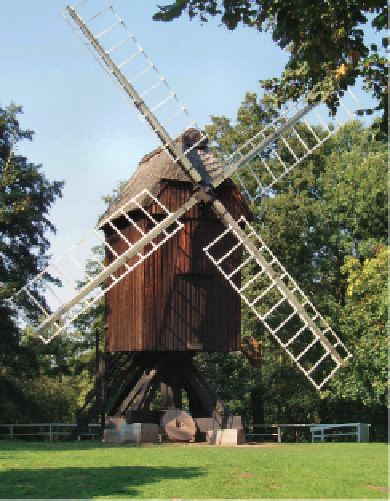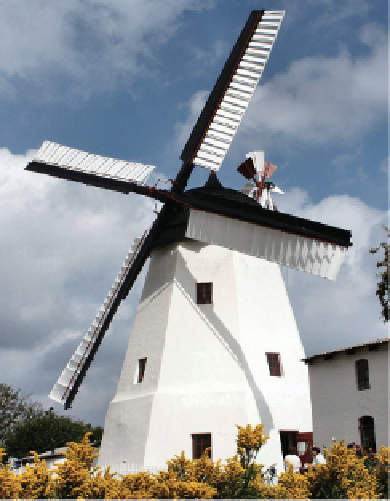Environmental Engineering Reference
In-Depth Information
Figure 8.1
Left: Historical post windmill in Stade, Germany.
Photo: STADE Tourismus-GmbH.
Right: Dutch
windmill on the Danish island of Bornholm.
rotated automatically in the wind and could be braked safely. By the mid-nineteenth
century 200 000 windmills were in use in Europe alone.
By the fi rst half of the twentieth century steam-driven engines and diesel and electric
motors had replaced almost all wind power systems. Wind power did not enjoy a
resurgence until the oil crisis of the late 1970s. More and more sophisticated wind
power plants are now offering a real alternative to fossil and nuclear power
stations.
8.1 Gone with the Wind - Where the Wind
Comes From
The sun is also ultimately responsible for the creation of wind. It bombards our
planet with gigantic amounts of radiation energy, and the earth has to radiate this
incoming solar energy back into space to save itself from continuous warming and
ultimately burning up. However, more solar energy reaches the equator than earth
radiates back into the universe. The path of sunlight to the South and North poles
is longer than to the equator. This explains why the situation at the poles is the exact
opposite. Considerably less solar radiation reaches the poles and more energy is
radiated into space than is emitted by the sun. As a result, a gigantic amount of
energy is transported from the equator to the poles.


